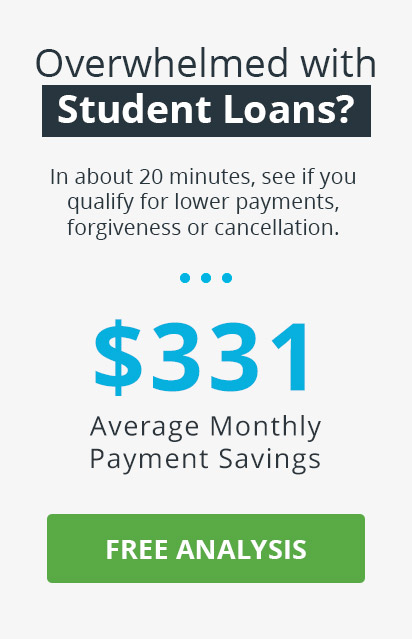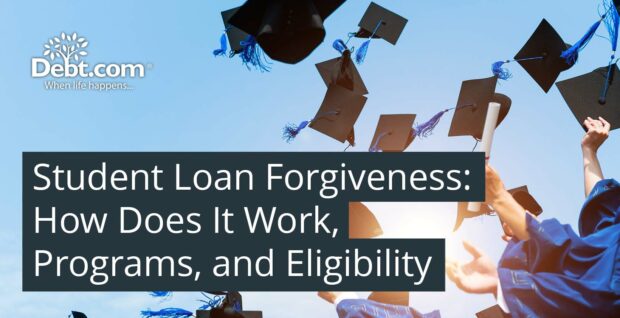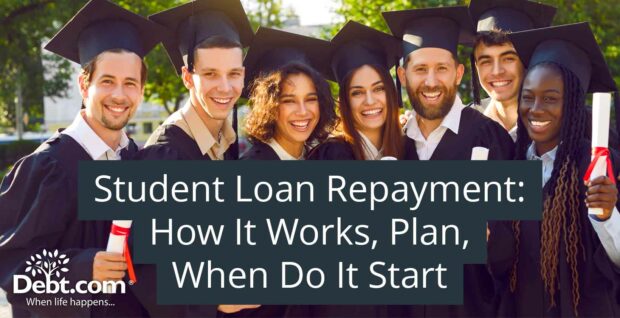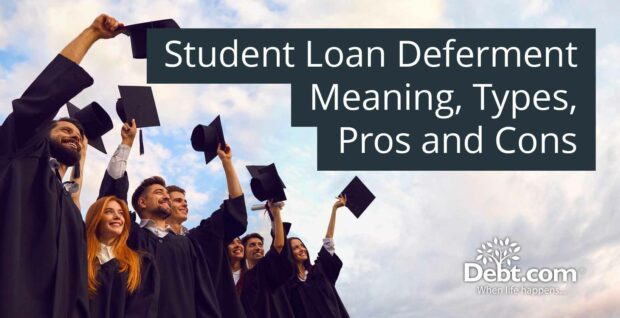
Federal student loan borrowers have had a welcome reprieve from payments for the last few years. Those with student loans in default, however, had to live with the looming threat of “default” status being applied as soon as the payment pause was over.
To support these borrowers, the U.S. Department of Education created the Fresh Start program. The program enables those with default student loans to regain “current” status and re-institutes their eligibility for income-driven repayment plans, other types of government-backed loans, and more.
Borrowers will need to act fast to take advantage of this federal program. The automatic benefits only last one year after the payment pause ends so borrowers have until August 30, 2024, to enroll and get out of default.
Am I eligible for the Fresh Start Program?
To qualify for the Fresh Start program for student loans, you must have had federal student loans in default from before the COVID-19 payment freeze started on March 13, 2020. Private loans of any kind are not eligible. However, not all federal loan types are automatically eligible either.
The following loans are eligible for Fresh Start:
- Defaulted William D. Ford Federal Direct Loan (Direct Loan) Program loans
- Defaulted Federal Family Education Loan (FFEL) Program loans
- Defaulted Perkins Loans held by ED
These loan types are not eligible:
- Defaulted Perkins Loans held by schools
- Defaulted Health Education Assistance Loan Program loans
- Student loans remaining with the U.S. Department of Justice for ongoing litigation
- Direct Loans that default after the end of the COVID-19 student loan payment pause
- FFEL Program loans that default after the end of the COVID-19 student loan payment pause
Getting started with Fresh Start
The enrollment process should be quick. Do it as soon as you can to begin a repayment plan and get out of debt sooner.
Step 1: Verify who holds your loans
Find out who your loan holder is if you don’t know already. If your defaulted loans include the above qualifying types, this is likely the U.S. Department of Education.
You can call 1-800-621-3115 if you aren’t sure who holds your loans. Those who are deaf or hard of hearing should call 1-877-825-9923.
Step 2: Gather information
Have personal information like your social security number handy. Also, try to round up your latest federal tax return, though not having one shouldn’t stop you from calling.
Step 3: Contact your loan holder
According to the Federal Student Aid website, this process should take less than 10 minutes.
Contact your loan servicer or reach out to the Department of Education directly for federally-held loans. You can do this online via myeddebt.ed.gov or call 1-800-621-3115. Those who are deaf or hard of hearing can call this number: 1-877-825-9923.
To start the process by mail instead, write a letter with your name, social security number, and date of birth. Make sure to include the following phrase: “I would like to use Fresh Start to bring my loans back into good standing.”
What happens next?
After enrolling in Fresh Start for your student loans in default, three things will happen:
- The Department of Education will transfer your loans to a loan servicer and away from the Default Resolution Group or guaranty agency. This will take four to six weeks.
- Your defaulted loans will regain the status “in repayment.”
- Your credit report will no longer show the default record.
Fresh Start’s automatic benefits
Those who enroll in Fresh Start will get these benefits from the Department of Education automatically. You can keep them if you use the program to get out of default and pay off your debt.
Benefit #1: Access to federal student aid
Borrowers with defaulted loans can’t take out any more money through federal student aid. With Fresh Start, this is no longer the case. You don’t even have to wait for the loans to officially transfer away from the Default Resolution Group – you can apply for aid using FAFSA as soon as you’re enrolled in Fresh Start.
Some may be confused by this. Why give someone the ability to borrow more money if they already have loans in default?
Fresh Start is about education and second chances. Their theory is that access to more aid may help borrowers complete a currently unfinished degree. Finishing the degree may lead to a higher-paying job, making it easier to stay out of default and get out of debt.
Benefit #2: No more collections
During the payment pause, collections on defaulted student loans were also paused. Fresh Start allows that pause to continue.
This means tax refunds and child tax credits will not be withheld, collectors will not garnish your wages, Social Security and disability payments will not be withheld, and collectors will not call you.
Benefit #3: Access to other government-backed loans
The government has its own credit reporting system referred to by the acronym CAIVRS. Lenders often immediately reject applicants who have loans “in default” in this system.
Enrolling in Fresh Start keeps this status off your record, meaning you have access to more forms of borrowing. This is especially important for potential homeowners, as mortgages are typically government-backed.
Benefit #4: Ability to rehabilitate your loans
Enrolling in Fresh Start will not count as rehabilitating your loans, which you can only do once. This means if you default again later, you will still have a chance at loan rehabilitation.
Loan rehabilitation is one of the few other ways to get your loans out of default. It takes several months to complete the process, but unlike consolidating your loans, it will get the default record removed from your credit.
This means that even if you default again after the Fresh Start program, you will have a rare second chance at getting that default record off your credit report.
NOTE: Unfortunately, if you don’t use the program to get out of default by one year after the payment pause ends, you will not get to keep these Fresh Start benefits.
Additional benefits
Now that your default status is on hold, you’re eligible for even more student loan repayment benefits that can help you get out of debt.
Income-driven repayment plans
The Fresh Start initiative allows borrowers who were in default to enroll in income-driven repayment plans. These plans can make repaying student loans easier by lowering monthly payments. It’s very important that you enroll in one of these plans after signing up for Fresh Start.
There are a few different income-driven repayments to choose from:
Income-based repayment (IBR)
Income-Based Repayment (IBR) is a type of income-driven repayment scheme where your monthly payment is determined based on a portion of your earnings. For individuals who initiated borrowing on or after July 1, 2014, this typically amounts to 10 percent of your disposable income, lasting for 20 years. However, if you commenced borrowing prior to this date, the repayment period extends to 25 years. It’s important to note that the percentages might differ, as payments are capped below what you’d pay under the standard 10-year repayment plan.
Income-contingent repayment (ICR)
Income-Contingent Repayment (ICR), another income-driven repayment type, comes with a 25-year term. Under ICR, payments are set at either 20 percent of your disposable income or the amount you’d pay with a fixed 12-year repayment plan adjusted according to your income – whichever of the two is lower.
Pay As You Earn (PAYE)
The Pay As You Earn (PAYE) program exclusively pertains to loans obtained post-October 2011. This plan boasts the most affordable payments, usually around 10 percent of your disposable income. Moreover, you’re allowed to skip or reduce payments if your income falls below the U.S. Department of Health and Human Services Poverty Guideline specific to your state. The PAYE plan spans a duration of 20 years.
The new SAVE plan
Formerly known as REPAYE (Revised Pay As You Earn), the new plan, Saving on a Valuable Education (SAVE), calculates payments based on discretionary income. That’s the gap between your adjusted gross income and 225 percent of the Poverty Guideline adjusted for family size. Unlike other plans, unpaid interest doesn’t inflate your balance. If you were on REPAYE, you’ll switch to SAVE automatically. Otherwise, apply through the income-driven repayment form.
Student loan forgiveness
Getting out of default opens you up to the possibility of loan forgiveness. For example, you could apply for Public Service Loan Forgiveness (PSLF) and start making payments that count toward its requirements.
In fact, if you use Fresh Start to get out of debt and enroll in PSLF, you can receive credit for payment periods from the beginning of the payment pause (March 2020) and beyond. Since PSLF takes 120 on-time payments for a borrower to qualify, this gives you a huge boost toward forgiveness.
If you wait until the Fresh Start period is over, you can’t receive credit for these payment periods even if you rehabilitate your loans to get out of default. Take advantage of this program as soon as you can if you meet other requirements for Public Service Loan Forgiveness.
Short-term relief
If you feel your financial situation makes short-term relief necessary, you can apply for deferment or forbearance after enrolling in Fresh Start. Deferment and forbearance allow borrowers to postpone making payments, but interest still accrues and there are different rules. Both require proof of financial hardship.
What if I default on my student loans again?
Fresh Start does not reset your original date of delinquency. The Department of Education will report the original date to credit agencies if you default again.
New loans taken out after you enroll in Fresh Start aren’t affected by the program, so defaulting on a new loan will be reported to credit agencies and be treated as a normal default.









